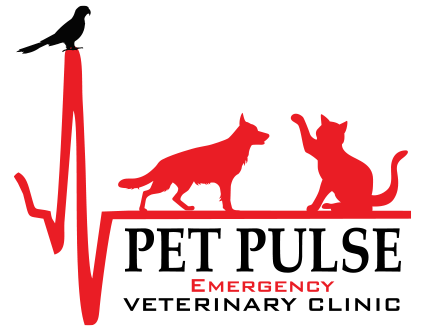Everything dog owners need to know about dog pooping blood—from causes to care.
Discovering blood in dog feces can be alarming for any pet owner. Whether it’s a few streaks of bright red or a darker, tarry appearance, dog pooping blood raises immediate concerns about your pet’s health. It’s essential to understand what this symptom could indicate and how to respond appropriately.
Blood in dog stool can result from various conditions, ranging from minor issues like dietary indiscretion to more serious problems such as infections or internal bleeding. Bright red blood often suggests bleeding in the lower gastrointestinal tract, while dark red or black stool may indicate bleeding higher up. Identifying the type and accompanying symptoms is key to knowing how urgent the situation is.
In this guide, we’ll explore causes, what blood in your dog’s stool might look like, and when to seek veterinary care.
Recognizing Blood in Dog Poop: What It Means
Understanding the color and texture of blood in stool is critical.
Hematochezia (Bright Red Blood)
This type of bleeding is fresh and usually comes from the lower digestive tract, like the colon or rectum. It often appears as red streaks or droplets on or around the stool.
Melena (Dark Red or Black, Tarry Stool)
Melena occurs when blood has been digested, often due to bleeding in the stomach or small intestine. The stool appears dark, sticky, and foul-smelling, similar to tar.
Causes of Dog Pooping Blood
Hematochezia
These causes involve undigested blood, often from the lower GI tract.
Dietary Indiscretion
Dogs that eat spoiled food, trash, or sharp bones can irritate the lower intestines or rectum, leading to bleeding, especially if straining to defecate.
Parasitic Infections
Hookworms, whipworms, or giardia inflame the intestines, causing blood in dog feces, often mixed with mucus. Puppies are especially vulnerable.
Bacterial or Viral Infections
Infections like salmonella, E. coli, and parvovirus can cause acute intestinal inflammation, resulting in bloody diarrhea. Parvo is especially serious in puppies.
Inflammatory Bowel Disease (IBD) or Colitis
Chronic inflammation of the colon leads to intermittent episodes of bloody, mucous-covered stool and may require long-term management.
Trauma or Rectal Injury
Injuries from straining, sharp objects, or anal gland issues can lead to small tears and fresh red blood on the stool surface.
Hemorrhagic Gastroenteritis (HGE)
HGE causes sudden, severe bloody diarrhea that looks like raspberry jam. This condition is dangerous and often requires hospitalization.
Addison’s Disease
This hormonal imbalance affects blood flow to the gut and can cause vomiting and bloody diarrhea during an Addisonian crisis.
Lower GI Blockage or Partial Obstruction
If a blockage occurs in the colon, it may cause straining, constipation, and visible bleeding in the stool.
Dark Red or Tarry Stool (Melena)
These causes involve digested blood and usually stem from the upper digestive tract.
Toxic Ingestion
Ingesting rat poison, NSAIDs, or harmful chemicals may lead to internal bleeding, showing up as black, tarry stool.
Stomach or Duodenal Ulcers
Ulcers can bleed internally, especially due to long-term NSAID use, infections, or stress. Affected dogs may vomit or lose their appetite.
Kidney Disease
Advanced kidney failure can damage the GI lining due to toxin buildup, resulting in melena and gastrointestinal bleeding.
Liver Disease
When liver function is impaired, blood clotting decreases and GI bleeding can occur, often manifesting as dark red or black stool.
Pancreatitis
Pancreatic inflammation may affect nearby blood vessels, causing bleeding, vomiting, and abdominal pain.
Upper GI Blockage or Intussusception
When part of the bowel folds into itself or a blockage occurs higher up, it may lead to tissue damage, bleeding, and tar-like stool.
Gastrointestinal Tumors
Benign or malignant tumors can ulcerate and bleed slowly over time, often without noticeable symptoms until melena appears.
Blood in Puppy Stool After Changing Food
Blood in puppy stool after changing food is a common result of a too-quick dietary switch. Puppies have sensitive digestive systems, and an abrupt change can cause irritation, diarrhea, and visible blood. To prevent this, transition to new food over 7–10 days. If symptoms persist or are paired with vomiting or lethargy, consult your vet promptly.
When to See a Vet for Dog Pooping Blood
Not every case of a dog pooping blood is an emergency, but some situations need urgent veterinary care. You should contact your vet right away if you notice large or repeated amounts of blood, dark tar-like stool (melena), vomiting, lethargy, or refusal to eat. Immediate attention is especially important for puppies, senior dogs, or small breeds like Pomeranians. Watch for signs of dehydration too, such as dry or sticky gums, sunken eyes, or skin that doesn’t bounce back when gently pinched, these can signal a serious problem needing prompt treatment.
What You Can Do at Home Before Seeing a Vet
While waiting for your appointment:
- Withhold food for 12–24 hours (unless otherwise advised)
- Offer small amounts of clean water
- Feed a bland diet like plain boiled chicken and rice once stable
- Avoid giving any medications unless prescribed
How Vets Diagnose Blood in Dog Stool?
To find out why a dog is pooping blood, veterinarians may perform:
- Physical exam, including abdominal palpation and rectal check, to detect pain, swelling, tumors, or anal gland issues
- Stool analysis to identify parasites, abnormal bacteria, or hidden blood
- SNAP tests for conditions like giardia and parvovirus
- Blood work to assess hydration, blood loss, infection, and organ function
- Imaging (X-rays or ultrasound) to detect tumors, blockages, or internal damage
- Fecal culture for identifying specific bacterial infections
- Hormonal testing, like cortisol levels, to check for diseases such as Addison’s
- Endoscopy or colonoscopy to directly view the GI tract and collect biopsy samples
These tools help your vet pinpoint the exact cause and create the right treatment plan.
Treatment Options for Dogs Pooping Blood
Treatment for a dog pooping blood depends on the cause, but may include:
- Bland diet and gut-supportive meds for mild digestive upset, especially after a food change
- Medications like probiotics, antibiotics, or antacids to reduce inflammation and restore balance
- Fluid therapy if dehydration is present—either under the skin for mild cases or IV fluids for severe dehydration
- Hospitalization for intensive monitoring if symptoms are severe or don’t improve
- Surgery or chemotherapy if bleeding is caused by tumors or intestinal damage
- Long-term care for chronic conditions like IBD, including regular checkups and medication management
Recovery time varies—some dogs improve in a day or two, while others need ongoing treatment. Always follow your vet’s guidance and schedule follow-ups to monitor
Recovery and Prevention Tips
Recovery involves rest, hydration, and gradually returning to a normal diet. Follow all veterinary instructions and complete prescribed medications. Prevent future episodes by:
- Keeping your dog on a consistent, high-quality diet
- Avoiding sudden food changes
- Using regular parasite prevention
- Keeping trash, bones, and toxins out of reach
- Scheduling annual wellness exams and staying current on vaccinations
Can Blood in Dog Stool Be Life-Threatening?
Yes, blood in dog stool can be life-threatening. While some causes are mild, others—like parvovirus, hemorrhagic gastroenteritis (HGE), gastrointestinal tumors, or toxin ingestion—can rapidly become fatal without urgent veterinary care. Puppies, small breeds, and senior dogs are especially at risk due to faster dehydration. If your dog is pooping blood, consult your vet immediately to prevent serious complications.
FAQs
Why would a dog poop blood but act normal?
A dog may poop blood but act normal if the cause is mild or in its early stages. Common reasons include dietary indiscretion, minor rectal injury, or stress-induced colitis. Even if your dog seems fine, visible blood in stool should not be ignored—it could be a sign of an underlying issue that needs veterinary attention.
Can stress cause blood in a dog’s stool?
Yes, stress can cause blood in a dog’s stool. Anxiety or sudden changes in environment, routine, or diet can trigger colitis—inflammation of the colon, which may result in loose stool with blood and mucus. If stress is suspected, consult your vet to rule out other causes and discuss calming strategies or dietary support.
What should I do if my Pomeranian has blood in the stool?
If your Pomeranian has blood in its stool, contact your vet right away. Small breeds like Pomeranians can dehydrate quickly and are more vulnerable to serious complications. Even mild bleeding may indicate infections, parasites, or internal issues that require prompt diagnosis and treatment. Don’t wait, early care is critical.
Can switching back to old food stop the bleeding in dogs?
Switching back to your dog’s old food may stop the bleeding if the issue is due to a sudden dietary change causing digestive upset. However, if blood in the stool persists for more than a day, or if your dog shows other symptoms like vomiting or lethargy, consult your vet to rule out parasites, infections, or more serious conditions.
Conclusion
If your dog is pooping blood—whether it’s bright red or dark and tarry—it’s a sign that shouldn’t be ignored. Some causes are mild, but others like parvovirus, ulcers, or GI tumors can be life-threatening, especially in puppies or small breeds.
From blood in puppy stool after changing food to dark stool in older dogs, early veterinary care is crucial. Spotting symptoms early and acting quickly can make all the difference. When in doubt, always contact your vet.



